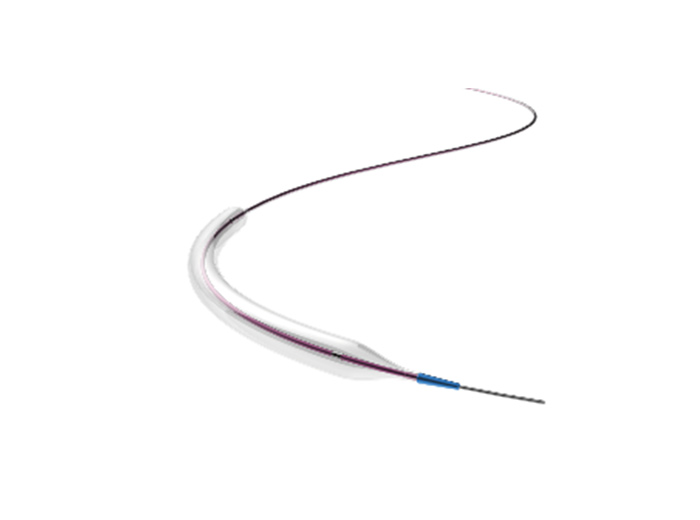the core of our corporate values
PTA Balloon Catheter Basics
PTA balloon catheters are specialized medical devices utilized by interventional radiologists and vascular surgeons to perform PTA. PTA is an endovascular procedure in which a balloon catheter is guided to the site of arterial narrowing or blockage and then inflated to relieve stenosis or occlusion.
PTA balloon catheters consist of balloon made of a polymer such as polyethylene terephthalate. They are available in different diameters to match the size of target arteries. During PTA, the balloon catheter is inserted through a small incision in the groin or arm and threaded through the arterial system to the occlusion under fluoroscopic guidance.
PTA Balloon Catheter Design Requirements
PTA balloon catheters must satisfy several crucial design requirements to achieve effective and safe outcomes. The first key requirement is compatible and durable balloon material. Conventional materials include polyethylene, polyvinyl chloride and polyethylene terephthalate. The material must be able to inflate to high pressures repeatedly without rupturing. It should also facilitate balloon deflation and catheter removal after the procedure.
A second essential requirement is balloon compliance and rated burst pressure. Balloon compliance refers to the amount of expansion at various inflation pressures. It must be suitable for the target artery size and able to expand enough to adequately widen the lumen. The rated burst pressure indicates the maximum pressure before rupture. It must be high enough for the balloon to resist damage during inflation at treatment pressures.
Catheter shaft design needs to be flexible and kink-resistant. It should have a low profile to navigate tortuous arterial paths. The shaft accommodates inflation lumens for balloon expansion and guidewire lumens to direct the catheter to the treatment site. Radiopaque markers placed at the balloon ends assist in positioning and viewing balloon inflation under fluoroscopy.
Other requirements include hydrophilic coatings on the catheter and balloon to reduce friction during vascular insertion, atraumatic guidewire compatibility for navigation to the stenosis, hemostasis valve for minimizing blood loss.
PTA Balloon Catheter Applications
PTA balloon catheters must satisfy several crucial design requirements to achieve effective and safe outcomes. The first key requirement is compatible and durable balloon material. Conventional materials include polyethylene, polyvinyl chloride and polyethylene terephthalate. The material must be able to inflate to high pressures repeatedly without rupturing. It should also facilitate balloon deflation and catheter removal after the procedure.
A second essential requirement for the PTA balloon dilatation catheter is balloon compliance and rated burst pressure. Balloon compliance refers to the amount of expansion at various inflation pressures. It must be suitable for the target artery size and able to expand enough to adequately widen the lumen. The rated burst pressure indicates the maximum pressure before rupture. It must be high enough for the balloon to resist damage during inflation at treatment pressures.
Catheter shaft design needs to be flexible and kink-resistant. It should have a low profile to navigate tortuous arterial paths. The shaft accommodates inflation lumens for balloon expansion and guidewire lumens to direct the catheter to the treatment site. Radiopaque markers placed at the balloon ends assist in positioning and viewing balloon inflation under fluoroscopy.
Other requirements include hydrophilic coatings on the catheter and balloon to reduce friction during vascular insertion, atraumatic guidewire compatibility for navigation to the stenosis, hemostasis valve for minimizing blood loss.
PTA Balloon Catheter Future Trends
Emerging drug-coated balloons are poised to boost the market of the PTA balloon catheter. Paclitaxel and sirolimus are popular choices for coatings due to their antiproliferative effects. Drug-coated balloons can reduce the incidence of restenosis and improve long-term patency without the need for stent placement. They provide a promising option for complex lesions not suitable for stenting.
Bioresorbable balloons and stents that naturally dissolve over time are under development. These could eliminate risks associated with permanent implants like stent fracture or in-stent restenosis from neo-intimal hyperplasia. Bioresorbable balloons would provide temporary stenting and drug delivery, then degrade once vessel patency and blood flow are restored.
As one of the professional peripheral vascular device companies in China, Zylox-Tonbridge provides varied PTA balloon catheter products, including high-pressure PTA balloon catheter, drug-coated balloon catheter, OTW balloon catheter, etc. Feel free to contact Zylox-Tonbridge for further info!
Return










